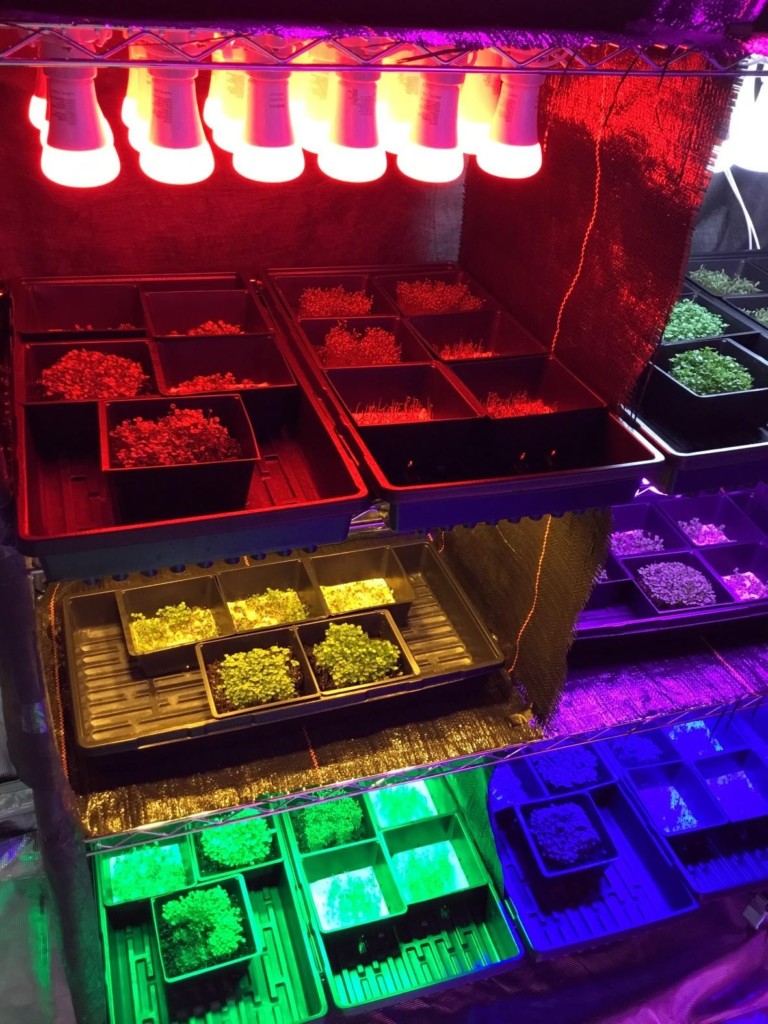PRAIRIE VIEW, Texas (June 17, 2020) – Microgreen vegetables are popping up everywhere these days, and researchers in Prairie View A&M University’s College of Agriculture and Human Sciences are studying how to maximize their nutritional benefits.
“We are exploring growing microgreens from specialty leafy greens, namely vegetable amaranth and Egyptian spinach. We are growing them under LED lights to determine if we can grow them faster and, two, if the microgreens produced have higher nutritional levels compared to plants grown to maturity,” explained Assistant Professor of Agronomy Peter Ampim, Ph.D.
The easy-to-grow crops are the first leaves of a plant, representing a growing stage between sprouts and full-grown leafy greens. They are tremendously beneficial as they contain up to 40 times the nutrients of mature vegetables, but they only require a fraction of the space and water needed to grow. These qualities, along with a wide variety of flavors and colors, make them perfect for indoor grow operations, ranging from first time home gardeners to commercial farms.
PVAMU’s team studying the crops includes Post-Doctoral Researcher Eric Obeng, Ph.D., Research Scientist Leaders, Aruna Weerasooriya, Ph.D., Godson Osuji, Ph.D., and Deland Myers, Ph.D. International collaborator Ernesto Olvera Gonzalez from the Technological Institute of Pavilion of Arteaga in Mexico is also assisting with the research, of which preliminary results have been published in The Scientific Journal of Biology & Life Sciences.
“The initial results of our research is promising because it provides solid background information to build upon, in terms of continued research, regarding these two specialty leafy greens and others. For example, as a result of the study, we now know the kind of light that matters when it comes to the yield of vegetable amaranth microgreens,” said Ampim.
And, the research is valuable for all because the business of growing microgreens is a lucrative one. Weerasooriya indicated in a recent presentation that microgreens in general command more than $50 per pound in upscale markets.
“Microgreens are one of the most profitable crops you can grow,” he said. “They are perfect as a standalone business or an addition to any small farm. And with it only taking about 10-15 days to mature, growing and selling microgreens is one of the best ways to start your urban farm. It is easy to learn how to grow them, and it is a quick way to generate income.”
In the near future, the team plans to post information online on how to grow microgreens successfully. According to Ampim, more research is needed to quantify the nutritional levels of the microgreens produced as compared to mature plants.
“I feel good about our research so far on specialty microgreens because the knowledge garnered can easily be applied to other leafy greens of interest,” said Ampim. “More so, the information generated could be useful to producers interested in growing microgreens, especially in peri-urban areas. It could also open doors of collaboration between other universities.”
This research is sure to help microgreens make a massive impact from bolstering one’s intake of greens to creating an evergreen source of income for communities in need.
###

